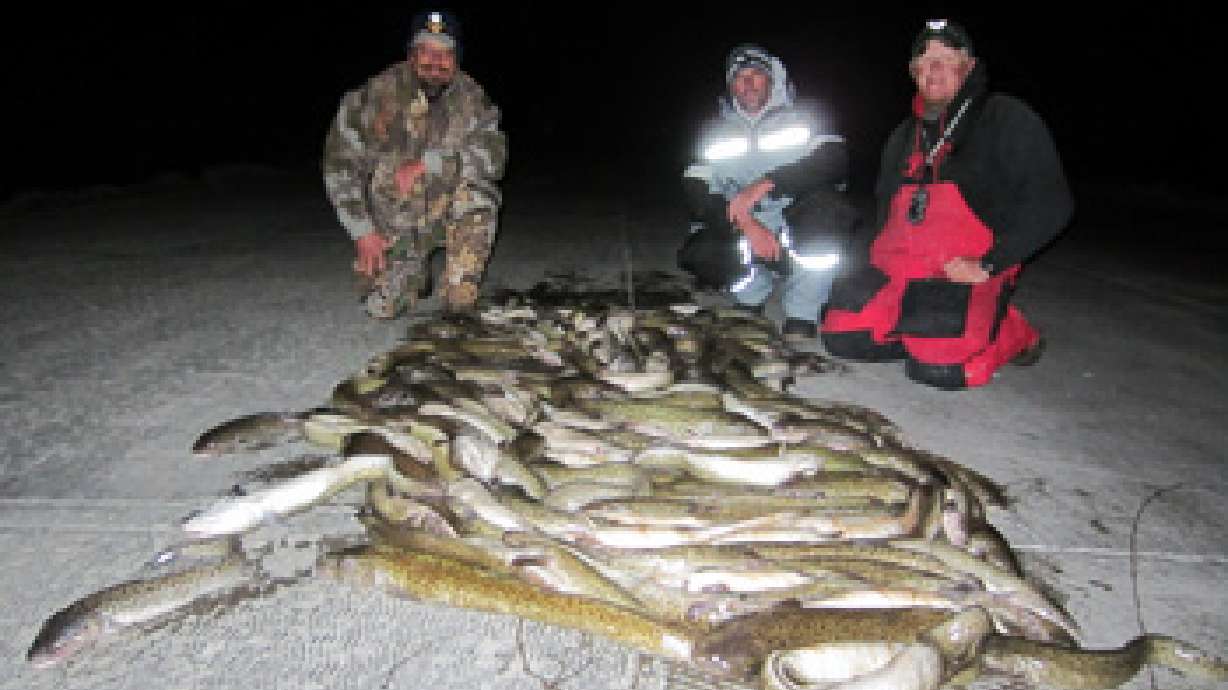Estimated read time: 4-5 minutes
This archived news story is available only for your personal, non-commercial use. Information in the story may be outdated or superseded by additional information. Reading or replaying the story in its archived form does not constitute a republication of the story.
FLAMING GORGE — The burbots arrived uninvited and unwanted, not that the other fish in Flaming Gorge care much, but reservoir managers certainly do. Burbots are not a native fish to the Gorge and there’s nothing in the reservoir they won’t eat. Their only real predators are people with rods, reels and glow-in-the-dark lures.
So it has fallen on anglers to catch, keep or kill any burbots caught on the Utah section of the reservoir. Come January, Wyoming regulations will follow suit.
As part of the effort to control burbots at Flaming Gorge an event tagged the “Burbot Bash’’ is held each winter. The reward for burbots caught by registered fishermen is — when distributed — $100,000. In 2012, the event drew 1,170 participants who caught and kept more than 4,000 burbots. Registration was held the weekend of Nov. 15.
This year there are three parts to the event: two weekends of fishing and a tagged-fish contest. The first weekend ended Nov. 17. The second will run Jan. 25-26. Categories are for the most fish, the biggest fish and the smallest fish.
Burbots are an ugly fish with a serpentine-like body. They look like a cross between a catfish and eel with definite fish features such as fins, tail and scales. But they also have a whisker on their chin, called a barbel, a flat head, an eel-like body and small but sharp teeth on both upper and lower jaws.
"They're a threat to the Gorge fishery," said Ryan Mosley, project leader for the Utah Division of Wildlife Resources.
#Quote
Burbots are tenacious predators and fertile spawners. An 18-inch female burbot can release one million eggs a year compared to an 18-inch female kokanee salmon that will only release 2,000 eggs a year.
“And there’s nothing in this reservoir I haven’t seen in the stomachs of burbots," Mosley said. "They are opportunistic and very voracious. They utilize the eggs of kokanee and trout, and I’ve seen all life stages of kokanee, trout and smallmouth in their stomachs.’’
However, burbots are a very tasty fish. Burbot roe is sold as caviar in Finland. In Canada, the highlight of a burbot event is the fish-fry afterwards. Some suggest burbot taste like an American lobster.
“In talking with fishermen, some anglers want to catch a lot of burbots to do their part, realizing they are bad for the reservoir. Others, I’d say, maybe half, catch (burbots) to eat. We’re trying to promote angler harvest. It’s difficult to know where we would be, with respect to the other fish in Flaming Gorge, if we didn’t have the keep and kill regulations. We have seen a negative impact on the smallmouth, but luckily the kokanee, lake trout and rainbow are doing well. In fact, this has been an excellent year for kokanee,’’ Mosley said.
It is still unknown how burbots got into Flaming Gorge. However, officials think that it was done illegally. The species were first found in the Green River drainage in 2001 and in the reservoir in 2006.
“Burbots are native to Wyoming, but on the opposite side of the divide. It wouldn’t have been difficult at all, maybe a 15 to 30 minute drive, and burbots could have been caught on one side of the divide and released into the Green River drainage. We actually believe there was more than one release because they showed up in a couple of different tributaries around the same time,’’ Mosley said.
Related Stories:
Many say that burbots can be difficult to catch, but it’s not uncommon for a fishermen, especially those fishing through the ice when the fish are most active, to catch 20 or 30 in an evening.
The fish being caught have averaged between 17 and 18 inches. The largest burbot caught was 36 inches long and weighed 11 pounds. The world record was caught in Canada and weighed 25 pounds, 2 ounces.
Fishing for burbots requires little in the way of tackle. Best success has been a glow-in-the-dark lure tipped with some type of meat, such as sucker, chub or even and night crawler.
“What I will do is rebait frequently and pull the lure every 10 to 15 minutes to recharge it,’' Mosley says.
Special regulations allow anglers, when fishing through the ice, to have up to six lines in the water at one time. Mosley says he’s seen fishermen with one or two lines, “do just as well.’’
For more information about fishing in the "Burbot Bash" click here.









